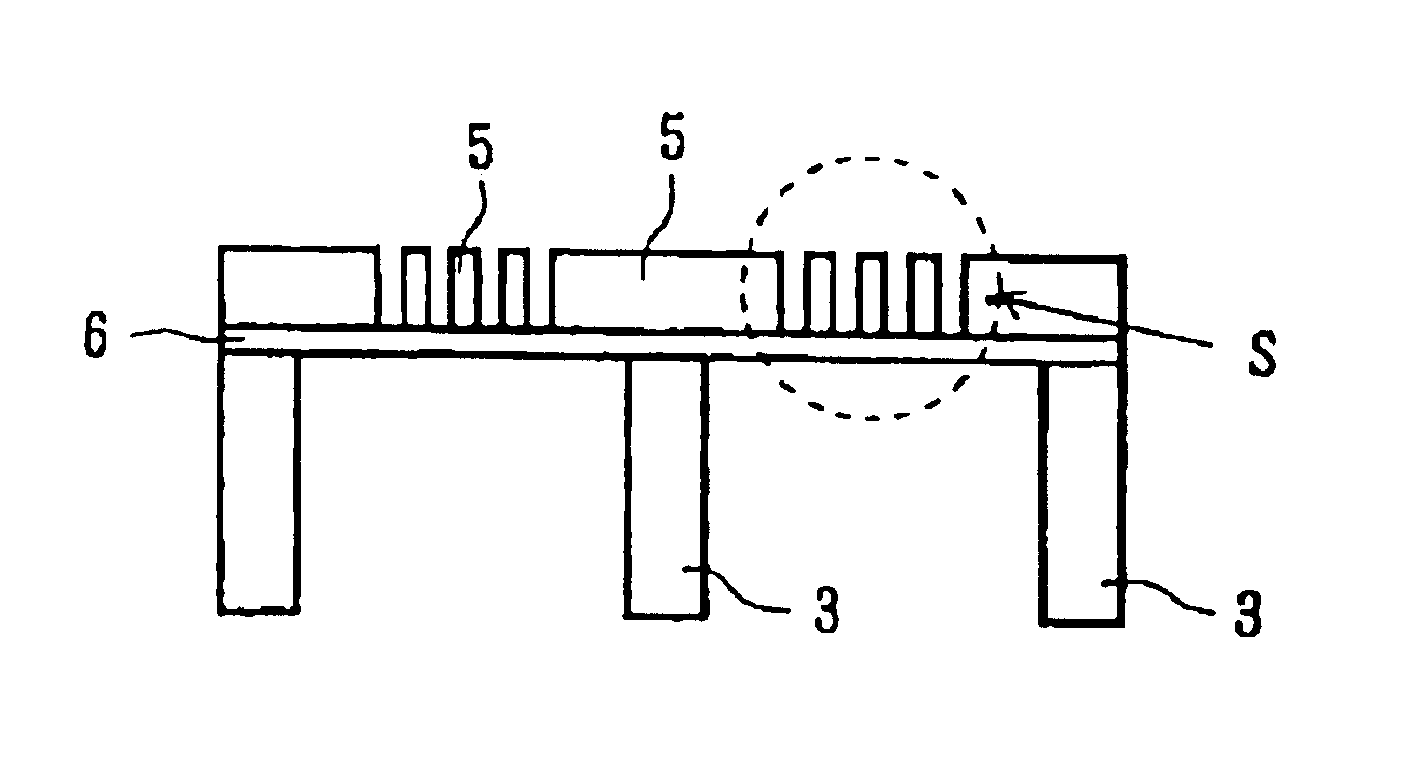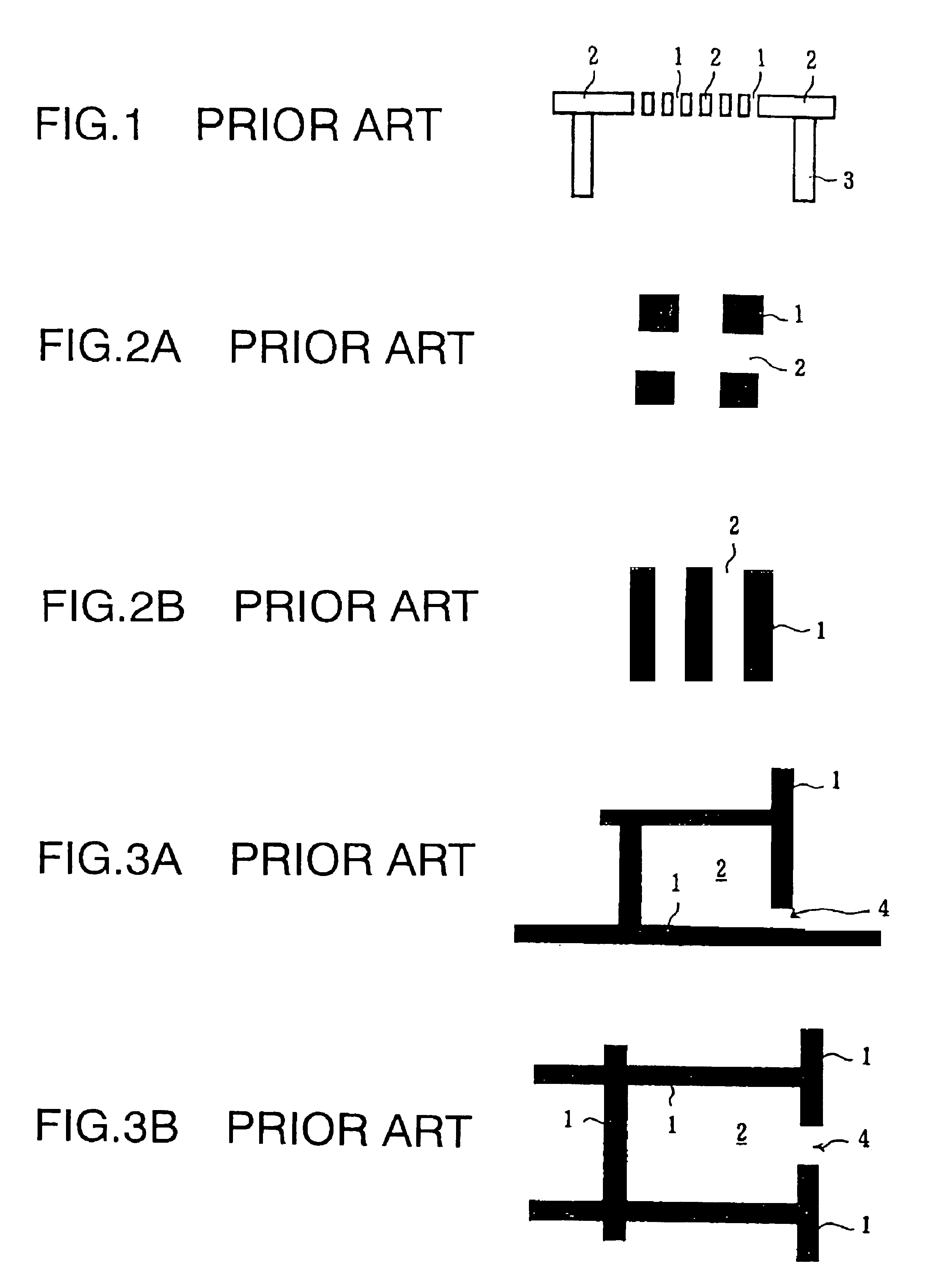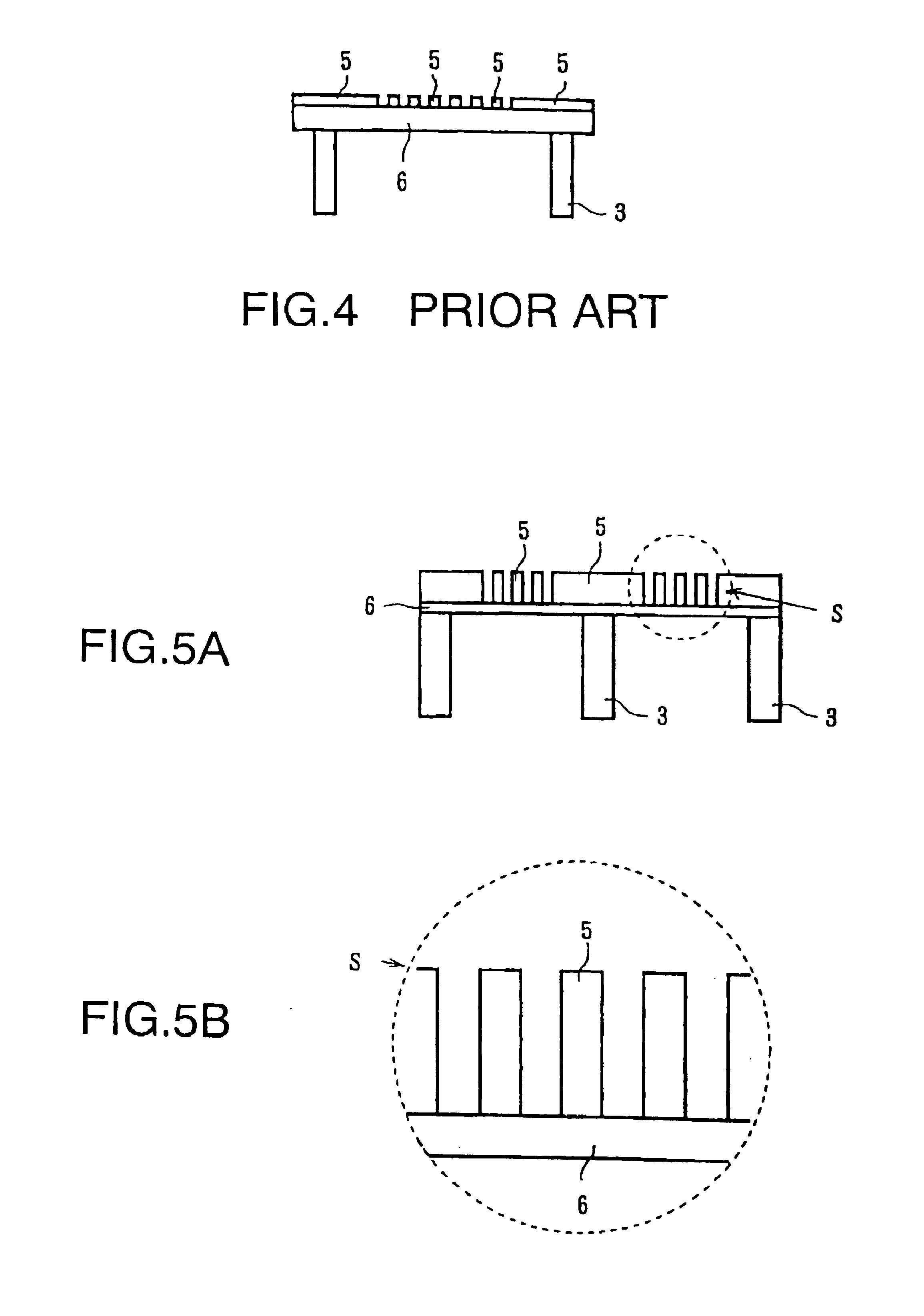Electron beam drawing mask blank, electron beam drawing mask, and method of manufacturing the same
- Summary
- Abstract
- Description
- Claims
- Application Information
AI Technical Summary
Benefits of technology
Problems solved by technology
Method used
Image
Examples
embodiment 1
(Embodiment 1)
Over a silicon substrate 11, as shown in FIG. 9A, an SiC layer 12 is formed to have a thickness of 0.03 micron as the pattern supporting layer (or film) by the CVD method. Over this SiC layer 12, an amorphous silicon (a-Si) layer 13 is formed (FIG. 9B) to have a thickness of 0.7 micron as the electron beam scattering layer by the CVD method. Subsequently, the back or under side of the substrate 11 is dry-etched to etch the Si thereby to form support members (or support pillars) 14 for supporting the pattern region (FIG. 9C).
Next, the upper face of the a-Si layer 13 is subjected to a lithography method (by the resist application, by the exposure, by the development and so on) to form a resist pattern 15 having a desired pattern shape (FIG. 9D).
Next, the a-Si layer 13 is etched (or trench-etched) at a high aspect ratio by the high-density plasma etching method (FIG. 9E). The etching selection ratio (SR) at this time is preferred to be as high as possible. In this embodim...
embodiment 2
(Embodiment 2)
In a mask manufactured in Embodiment 2, the etching stopper layer 7 is sandwiched between the electron beam scattering layer 5 and the pattern supporting layer 6. This structure aims substantially at preventing the pattern supporting layer 6 from being etched by the etching stopper layer 7 at the time of etching the electron beam scattering layer 5, and is effective where the electron beam scattering layer 5 and the pattern supporting layer 6 have a small etching selection ratio. Another purpose for sandwiching the etching stopper layer 7 will be described in the following. Where a deflection is unpreferably caused in the pattern field portion due to the unbalance in the membrane stress between the electron beam scattering layer 5 and the pattern supporting layer 6, the membrane stress balance can be adjusted by adding the etching stopper layer 7. Thus, it is possible to give the etching stopper layer 7 the function to adjust the stress.
Here will be described an exampl...
embodiment 3
(Embodiment 3)
In Embodiment 3, here will be described the mask construction which can optimize the mask material while satisfying the mask characteristics of the present invention, and a method for manufacturing the mask.
In order to satisfy a structurally high strength and a high electron transmissivity in the mask, it is desired to reduce the film material density, to increase the material strength characteristics such as the Young's modulus, and to make the electron beam scattering body as thick as possible. In addition, the material is desired to make the pattern supporting layer as thin as possible, to have an excellent chemical resistance and an excellent irradiation resistance, and to have an excellent etchability from the view point of the pattern precision. Moreover, the material is desired not to be an insulating material while considering the charging.
Here will be enumerated the materials which satisfy those characteristics and the mask characteristics of the present inven...
PUM
 Login to View More
Login to View More Abstract
Description
Claims
Application Information
 Login to View More
Login to View More - R&D
- Intellectual Property
- Life Sciences
- Materials
- Tech Scout
- Unparalleled Data Quality
- Higher Quality Content
- 60% Fewer Hallucinations
Browse by: Latest US Patents, China's latest patents, Technical Efficacy Thesaurus, Application Domain, Technology Topic, Popular Technical Reports.
© 2025 PatSnap. All rights reserved.Legal|Privacy policy|Modern Slavery Act Transparency Statement|Sitemap|About US| Contact US: help@patsnap.com



